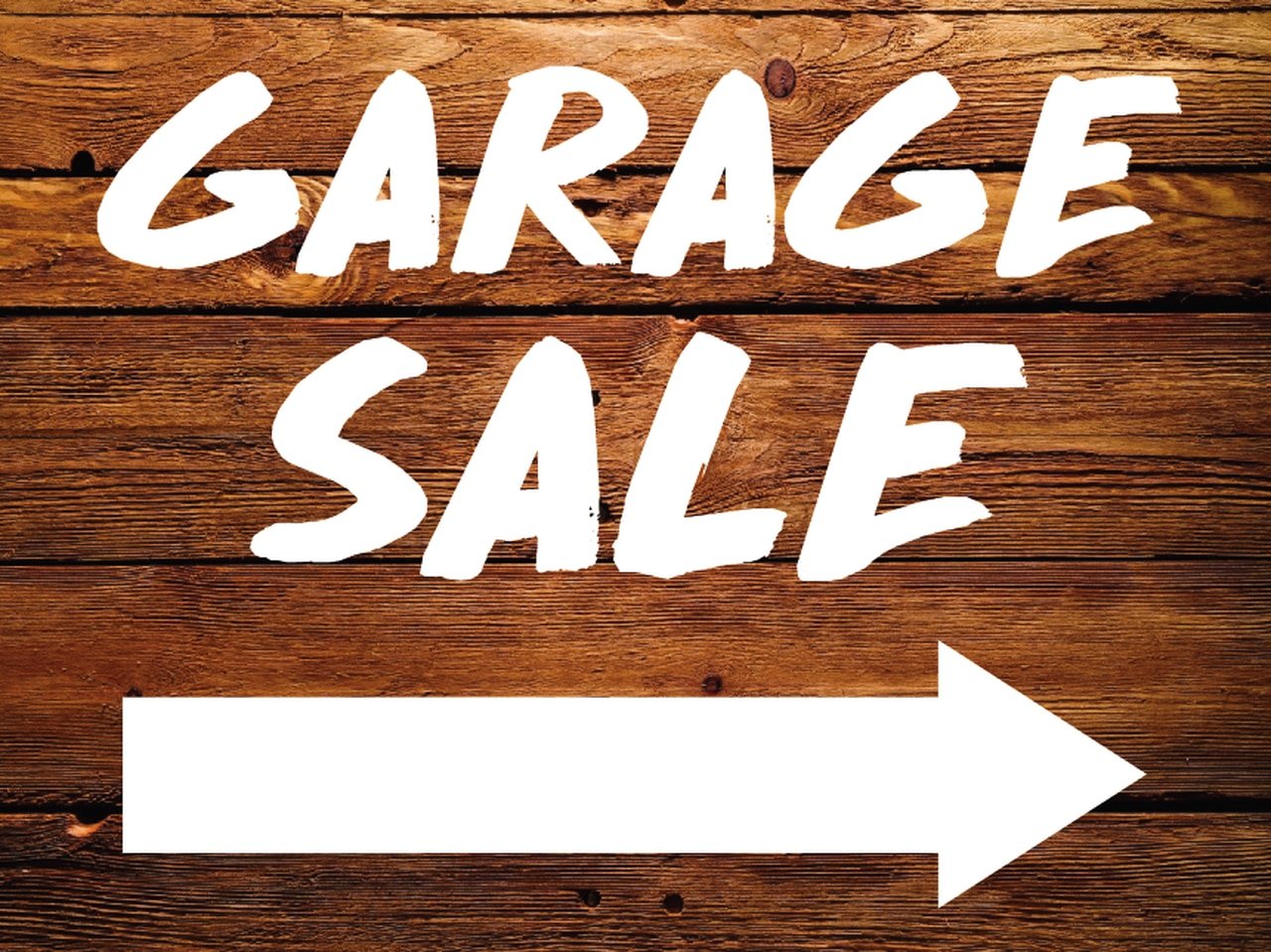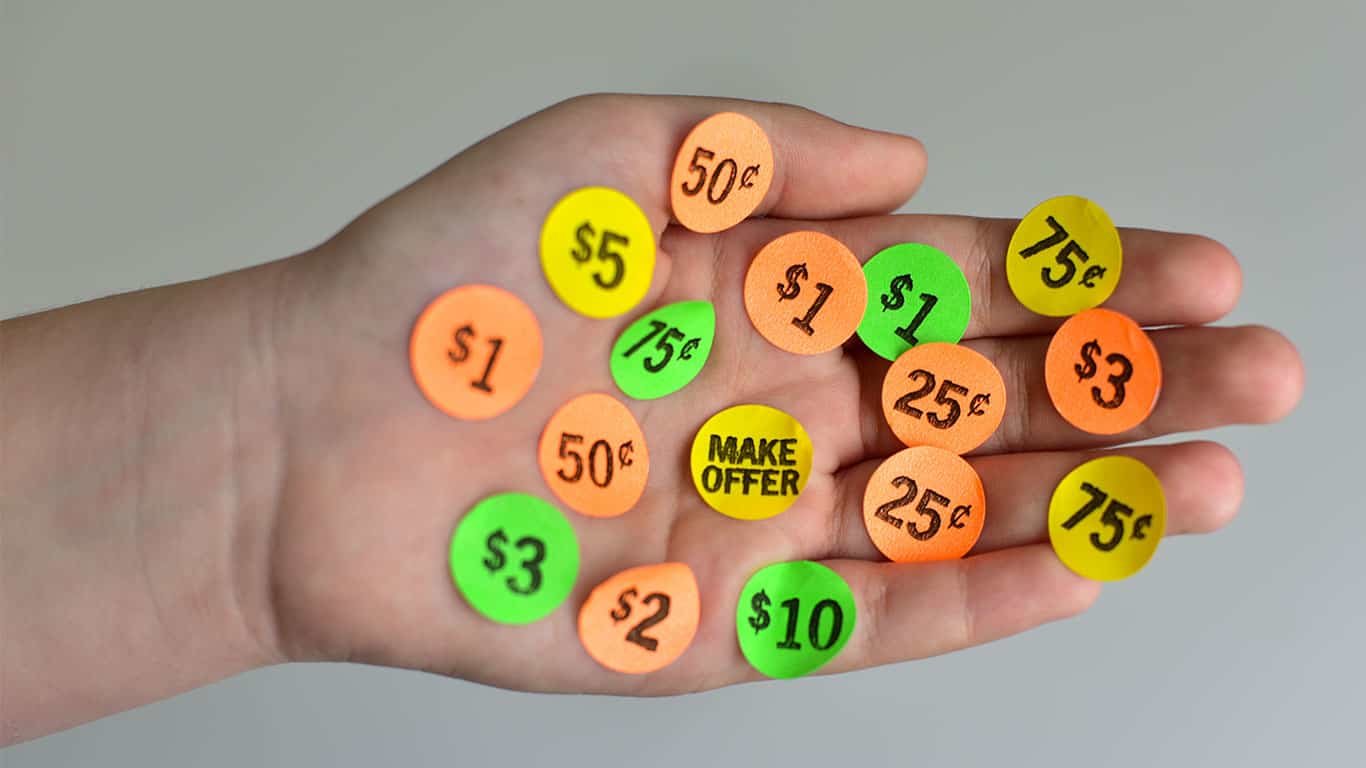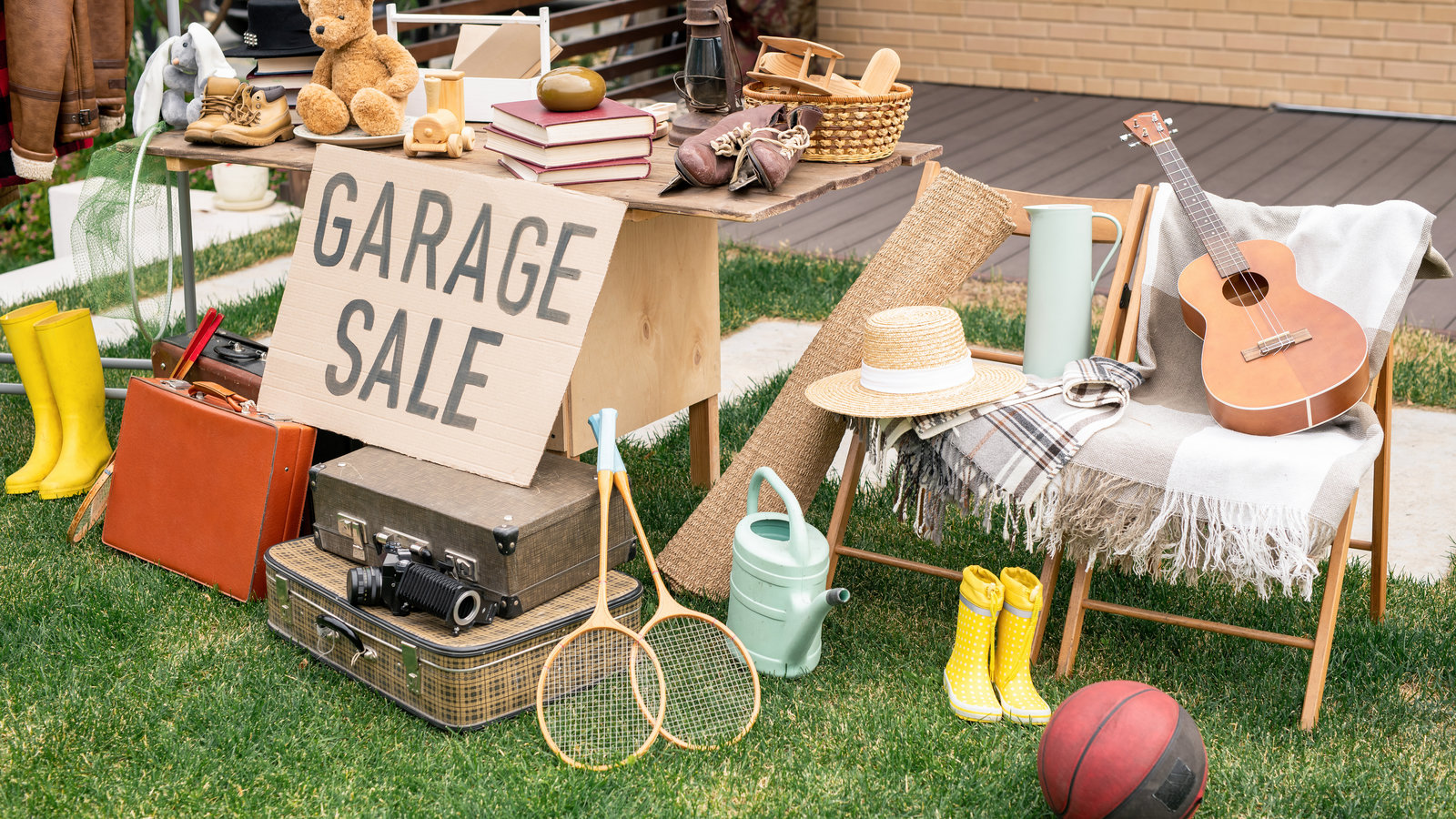How to Price Your Stuff so It Sells

Pricing your merchandise right is crucial when you're having a yard sale. If you set the prices too high, your stuff won't sell. If your prices are too low, you lose money you could have made. To make the process a little easier, here are a few dos and don'ts of garage sale pricing.
10 Yard Sale Pricing Dos
- Price everything before the sale starts.
- Price each item individually. The only exceptions are groups of like items that are all priced the same, such as books. Place all of these on a table together.
 Make a simple sign with big lettering that says "Books $1 each" or whatever price you've set. Hang the sign on the front of the table or on the wall behind it.
Make a simple sign with big lettering that says "Books $1 each" or whatever price you've set. Hang the sign on the front of the table or on the wall behind it. - Use a fine-point marker to write your prices on plain stickers or use pre-printed stickers. It's easier to read than a ballpoint pen, especially for shoppers who forget their reading glasses.
- Price your merchandise with neon-colored stickers, except for paper items the adhesive might damage. It makes the price easy to find and it's faster than tearing masking tape into squares.
- Opt for low-tack stickers (if you can find them). They're easier to remove from porcelain, paper, wood, and glass.
- Visit some area yard sales to get a feel for local pricing on different types of things. If most sellers price hardbound books at 50 cents to $1, yours won't sell at $3 each. If name-brand blue jeans typically sell for $2 in your neighborhood, marking yours at 25 cents per pair is way too low.
- Research items that might be valuable. Check a price guide and do a completed item search on eBay. If you find an identical piece, you can print the listing and attach it to your item to demonstrate value, but don't expect to get that price at a yard sale. If your piece is worth money, you might do better selling it elsewhere.
- Assume that shoppers will haggle. On pricey pieces and large items such as furniture, build some negotiating room (15 to 20 percent above your minimum) into the sticker price.
- Mark the price tags on pricey pieces as "Firm" if you're not willing to haggle at all.
- Use color-coded stickers or mark the price tags with the sellers' initials if you're having a multi-family sale. As shoppers pay, peel off the stickers and stick them on a notebook page. Tally the results later. It takes too long to keep a written log as you go and your customers have other stops on their yard sale routes.
8 Yard Sale Pricing Don'ts
- Don't display your yard sale goods without prices. That's one of the most irritating mistakes sellers make. Yard sales get hectic, and nobody wants to wait in line just to get a price. Shy or impatient shoppers may even leave without asking.

- Don't put stickers on old album covers, collectible magazines, book dust jackets, or vintage paper goods, such as postcards or posters (often called ephemera, and it's often quite collectible). The adhesive may cause damage. Opt instead for pieces of low-tack painter's tape.
- Don't pause before giving a price when a customer asks. When you hesitate before answering, the shopper assumes you're sizing him up for his ability to pay. The exception is if you've already reached the haggling stage, where hesitation is a legitimate tactic.
- Don't base your price on what you paid for the item. Remember that you're selling used merchandise. You may see the strappy designer sandals that cost you $200 at a department store, but your customers see them as used shoes that contained a stranger's feet.
- Don't create a complicated pricing system where customers have to refer to a chart or remember what different sticker colors mean. It's annoying to the customer and you'll spend most of the day answering questions about price. Make it easy for your customers to buy your stuff.
- Don't skip individual price stickers in favor of arranging the items by price. That only works with like items, such as books or shoes. It's too easy for merchandise to intentionally or accidentally end up in the wrong place at some point. Honest shoppers will feel like you're scamming them when you correct the price. Con artists will try to scam you.
- Don't price your goods based on sentiment. The customers don't care about your memories and they're certainly not willing to pay more to purchase them. If something is that valuable to you, maybe you should keep it.
- Don't wait until the day of the sale to get prices for merchandise that doesn't belong to you. When a shopper asks for a price, she doesn't want to wait while you call your daughter or best friend. If other people want to sell their stuff at your yard sale, make them price the pieces in advance.
Garage Sale Price Guide
While those tips are helpful, it's still difficult to know what prices to ask for your garage sale merchandise. If you're looking for somewhere to begin, we have a few ideas to help out. These are only general prices that these items typically sell for. Feel free to adjust yours based on your area and the condition of each item.
Clothing and Accessories
- Adult Clothes: $3 to $5 will work for most pants, shirts, sweaters, and the like. If it still has the original price tag and is unworn, up the price.
- Baby Clothes: $1 to $3 is a good range for gently used clothing, though you can drop it to 50 cents for those that have seen more use.
- Coats: $5 to $15, with the low end for children's coats and the high end for adults. Price heavy winter coats higher than thin spring jackets and keep material and designer in mind. Your husband's leather jacket will probably sell for more. Be sure to advertise any really great coats in advance.
- Jewelry: 50 cents to $2 works for most costume jewelry. Double check to make sure you don't have any pieces of real value and use small plastic bags to group sets together.
- Shoes: $3 to $7 depending on the style, amount of wear, and whether the shoes are for kids or adults. For baby and toddler shoes, keep it in the $1 to $2 range. Try to remove any scuff marks and give them a quick cleaning to tempt buyers.
Books, Music, and Games
- Books: 25 to 50 cents for paperbacks and $1 to $2 for hardcovers are good prices that should thin out your library. Again, be sure to look for any books that may be of more value, including larger coffee table books or anything that would appeal to collectors.
- Music and Movies: Technology moves fast, so watch out for this one and price your items to sell. DVDs and Blu-rays can sell for $3 to $5, while CDs may only sell for $1 to $3. VHS and cassette tapes require a special buyer who still has the equipment, so go low with $1 or less.
- Vinyl Records: $2 for each LP album is a good price because these are becoming collectible again. Pull out any records you know to be rare, highly desirable, and in excellent condition, then do some research. Either ask a higher price or sell them through a music store or an online auction to get top dollar. Records can also be boxed and sold as a lot for one price. This is particularly true of 45s and other types of vinyl. Advertise your records because they can really bring in buyers.
- Toys and Games: $1 to $3 depending on the style and condition. Electronic and truly vintage games can go for much higher prices if you back it up with research. Also, kids like to dig through a box of free toys, so if you simply want someone else to enjoy what your kids did, give this a try.
Electronics and Computer Equipment
- This will depend a lot on the particular item, how useful it is today, and it's condition. In general, don't price any electronics over one-third or one-quarter of its retail price at the store.
Kitchen Items
- Dishware: $1 to $3 per piece, including glasses, plates, and common kitchen utensils. Try to keep full sets together and offer them for a reduced price. For example, an 8-piece plate set could sell better for $12 than $16 at $2 a piece.
- Silverware and Knives: Price your silverware in sets, asking around $3 to $5 for a complete set or four items for $1. Knives should be priced according to quality and use, but $1 to $2 is a good range.
- Kitchen Gadgets and Small Appliances: This is another category where one-third of retail price applies. The exceptions may be small gadgets like lemon squeezers or any gimmicky things you think may be a hard sell. For these, price them at $1 to $2.
Furniture and Decor
Furniture is a tough category to generalize, but if you advertise it properly you can attract the right buyers to move those bigger pieces. In general, you can categorize furniture into two types: cheap and ready-to-use. 
On the cheap end, you're targeting college students, young people with their first apartment, and people who love to repurpose furniture. For these, you can ask $5 to $30, depending on what type of furniture it is, the condition, and the material it's made of. Solid wood coffee tables that need some rehab can be higher priced than a flimsy "assemble-it-yourself" entertainment center.
For the "ready-to-use" furniture, we're talking about sofas, chairs, dining room sets, and other pieces that someone can take home, dust off, and enjoy that night. These are probably the bigger ticket items you paid good money for. Similar to electronics, use a target price of one-third the retail price and adjust that based on condition.
Always keep in mind how badly you want to get rid of these big items, too. Getting a little cash and not having to move that old sofa around again can be worth asking a lower price. Also, place your big items near the street to grab the attention of passers-by. For antiques and design items, consider these prices:
- Antiques: Should be priced accordingly to a fair market value. Do some research so you have an idea of the value or ask for an appraisal from an antique dealer (who may offer to buy it, as well).
- Decor Items: $2 to $7, depending on what it is, its size, and its original value. This includes all of your vases, wall hangings, and various trinkets you've decorated your home with. Working lamps in good condition can sell for $5 to $10, depending on size and style.
Leah French for thespruce.com
Posted by The Cobb Group on
Leave A Comment